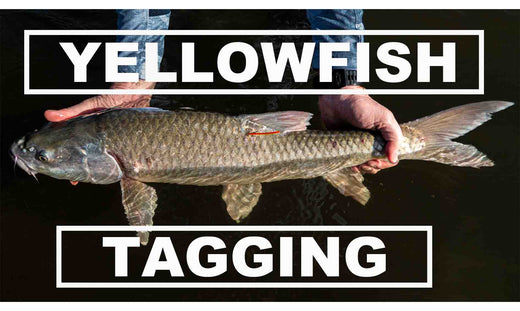The Orange River is South Africa's longest river system, starting in the Lesotho mountains and flowing diagonally across the country until it meets the Atlantic Ocean, forming the border between South Africa and Namibia. The Orange River is home to the endemic and highly sought-after Largemouth and Smallmouth Yellowfish. However, there is still much to learn about these fish.

In collaboration with the University of Mpumalanga and Rivers of Life, we aim to improve our knowledge and understanding of the Largemouth Yellowfish (Labeobarbus kimberleyensis) and the Smallmouth Yellowfish (Labeobarbus aeneus) to help protect these species. Research has never been conducted on these fish in the lower reaches of the Orange River and we are excited about the prospects.
After almost seven years of drought, followed by three years of flooding, we are eager to gain more knowledge about these fish. Our research aims to answer important questions, such as their behaviour, movements, growth rates, and the impact of fishing on the fishery.
Angelica Kaiser, a PhD student from UMP and a researcher for Rivers of Life, joined us for a drift in the desert to find more answers. During the week, we conducted water sampling, micro-specie netting, dart tagging, and fin clips for DNA analysis. She also trained our guides and taught them the proper procedures to ensure they are capable of continuing the tagging program in the upcoming seasons.

Whenever our clients catch a sexually mature fish, the guide measures, weighs, tags, and takes a fin clip of the fish. We also record various details, such as water temperature, location, types of water, weather conditions, moon phases, length, girth, weight, and the condition of the fish.

If a tagged fish is recaptured, it will undergo the same process, and we will compare the information gained using the unique code on the dart tag. With sufficient research, we hope to gain a better understanding of yellowfish behaviour and movement, as well as to determine the impact of fishing, water levels, and water quality on the fishery.
You can help and be a part of the research. If you are fishing in the lower reaches of the Orange River and come across a tagged yellowfish, please ensure the fish remains wet and in the water. Then measure:
- Total length (from the point of the nose to the point of the tail)
- Fork length (from the point of the nose to the middle of the “V” in the tail)
- Standard length (from the point of the nose, along the lateral line, to the start of the tail)
- Girth (around the thickest part of the fish’s shoulders)

Please release any tagged fish. You can send the details and photos (of the fish and tag) to the website on the dart tag. Even if you only have the location and tag number, it can still contribute to our research. Any information about a tagged fish is a step in the right direction.

